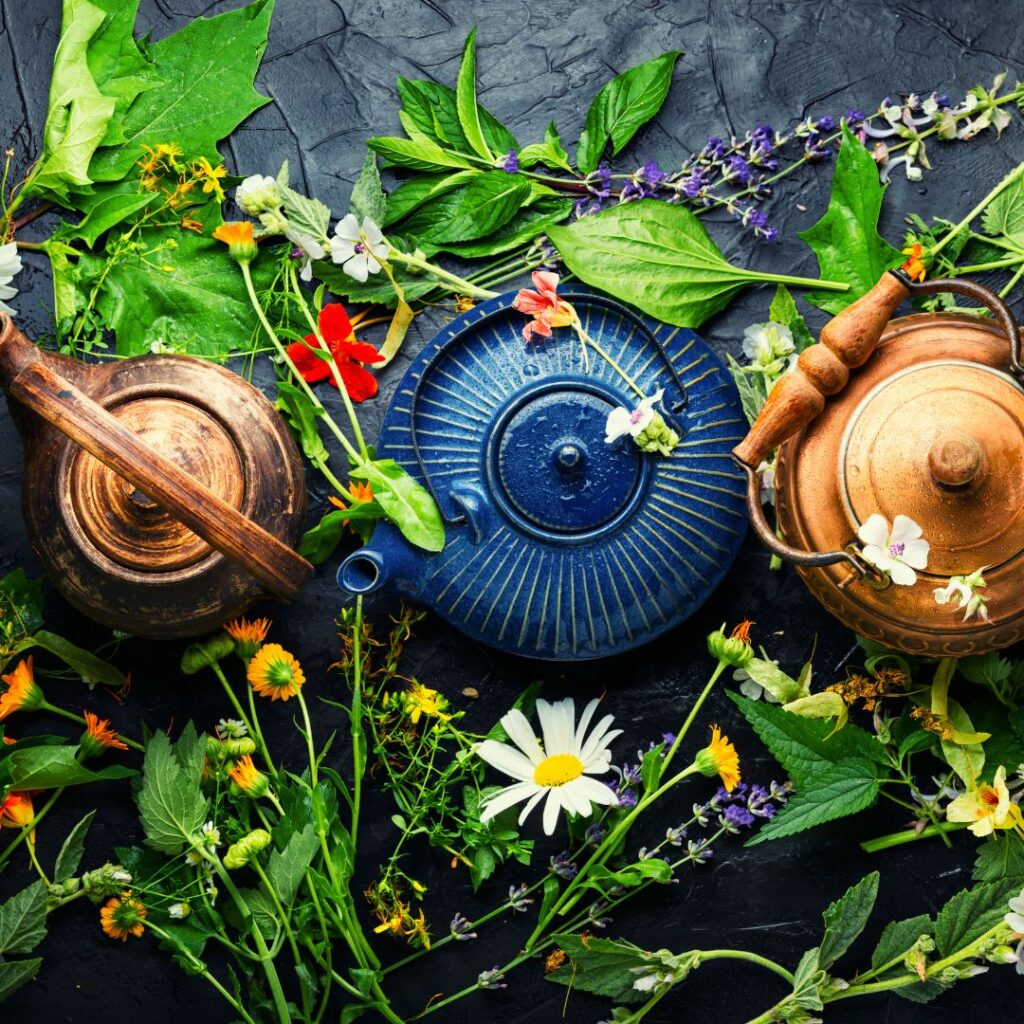
Imagine sipping a hot cup of tea, knowing that you grew each leaf yourself! Not only do you get the joy of gardening (and a beautiful, fragrant summer garden) but you get an abundant supply of fresh, organic tea leaves.
You don’t need a lot of space to grow enough for an entire winter season of tea. This article will show you how!
Choosing the Right Plants
Most fragrant herbs are delicious in tea! These are our top 4 choices plus a must-have for natural sweetness. All are easy to grow, and most are perennial in USDA zones 4 or warmer.
Lemon Verbena (Aloysia citrodora) (Shop here): Known for its intense fragrance, lemon verbena makes a refreshing and uplifting tea. This tender perennial thrives in full sun and well-drained soil, making it a delightful addition to your garden.

Lemon Balm (Melissa officinalis) (Shop here): With its vibrant lemon scent, lemon balm adds a delightful citrus note to your tea. This herb is resilient and grows well in partial shade to full sun. It’s also known for its stress-relieving benefits.

Peppermint (Mentha × piperita) (Shop here): Peppermint is a perennial, vigorous grower and a popular choice for teas. Its strong minty flavor is perfect for soothing digestive issues and even is a strong mosquito repelling plant! It will grow well in containers too.
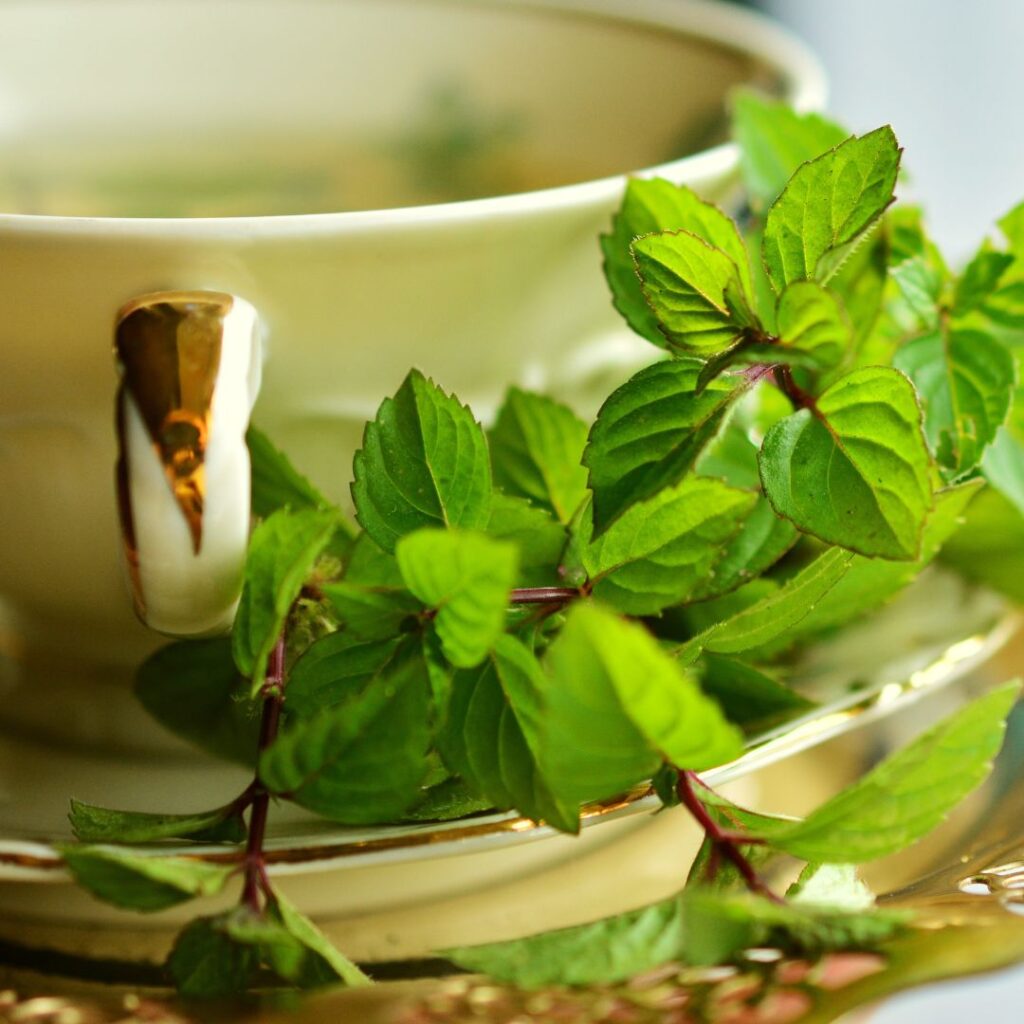
Lavender (Lavandula angustifolia) (Shop here): Lavender tea offers a unique floral flavor and a calming aroma. This drought-tolerant plant loves full sun and well-drained soil. It’s also a beautiful addition to any garden with its striking purple flowers.

Stevia (Stevia rebaudiana) (Shop here): Stevia is a natural sweetener that can enhance the sweetness of your tea without adding calories. This easy-to-grow herb prefers full sun and well-drained soil. Grow it in containers or in your garden and just pinch off a leaf or two for instant sweetness.
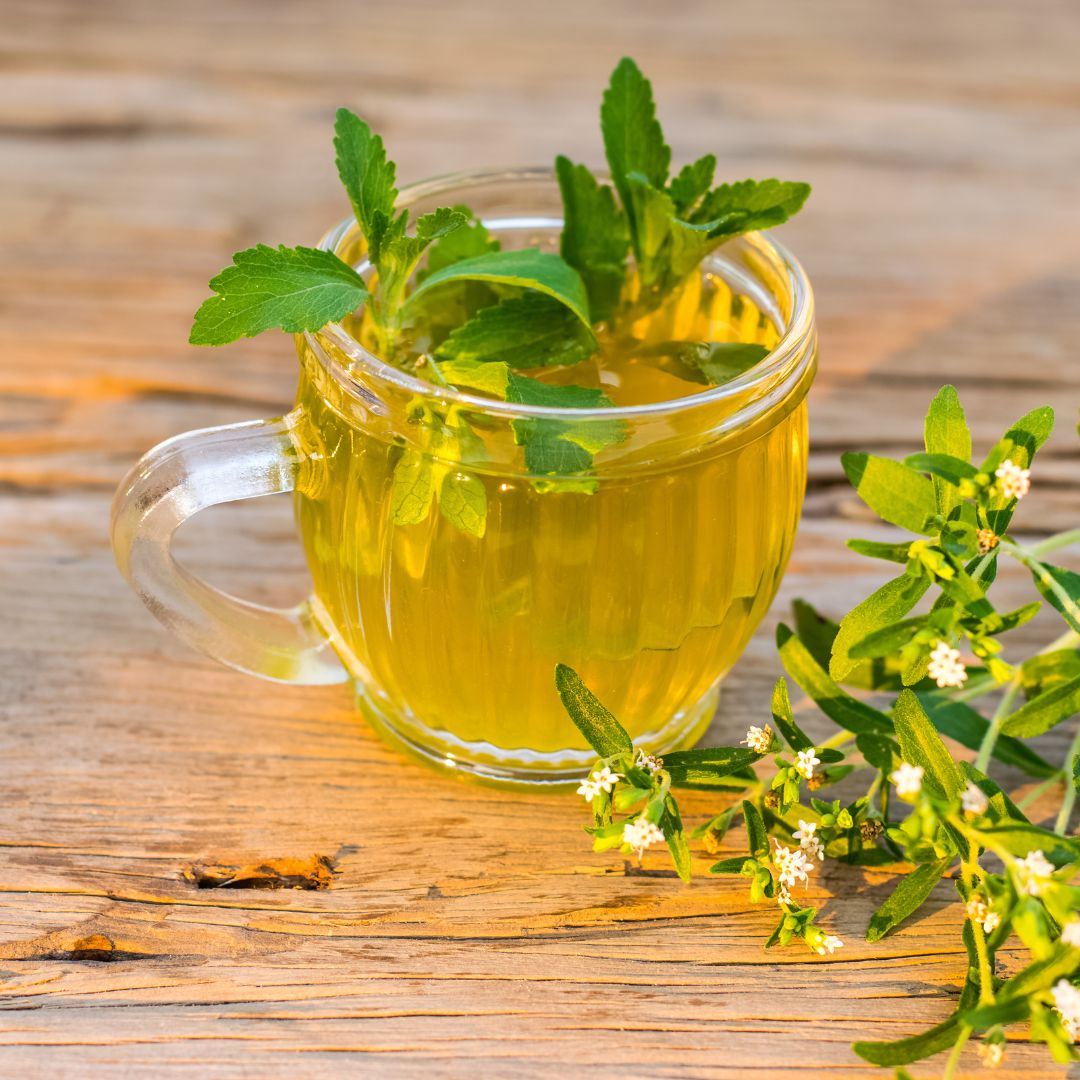
Preparing Your Garden Space
Creating the ideal environment for your tea plants is crucial for their growth and health. Here’s how to prepare your garden space:
Sunlight and Soil: Most tea herbs prefer full sun, though some can tolerate partial shade. Ensure your garden area receives at least 6 hours of sunlight daily. The soil should be well-draining and rich in organic matter. If your soil is heavy clay or sandy, amend it with compost to improve its texture and fertility.
Containers or Ground: These plants work both in-ground or in containers. They all have lovely leaf structure and some have flowers so they do well in patio pots or even window boxes mixed with annual flowers. Perennials herbs make stunning foundation plantings or a pretty addition to a regular veggie garden (and they make great companion plants! Just note that perennial plants in pots will not survive freezing temps unless you protect the roots.
Watering: These herbs prefer consistent moisture but not soggy soil. Some like lavender even do better if left to slightly dry out between waterings. Water your plants early in the morning to allow leaves to dry out during the day and water from the bottom instead of overhead. When watering be sure to give enough so the water gets to the bottom of the root structure.
Planting and Care Tips
Follow the planting recommendations for depth and spacing that’s on the plant tag. Once planted, apply a layer of mulch around your plants to help retain soil moisture, suppress weeds, and regulate soil temperature. Organic mulches like straw, shredded leaves, or bark are excellent choices.
Herbs are generally not heavy feeders, but they benefit from a light application of compost or a balanced organic fertilizer during the growing season. Avoid over-fertilizing, as this can lead to lush foliage with less flavor.
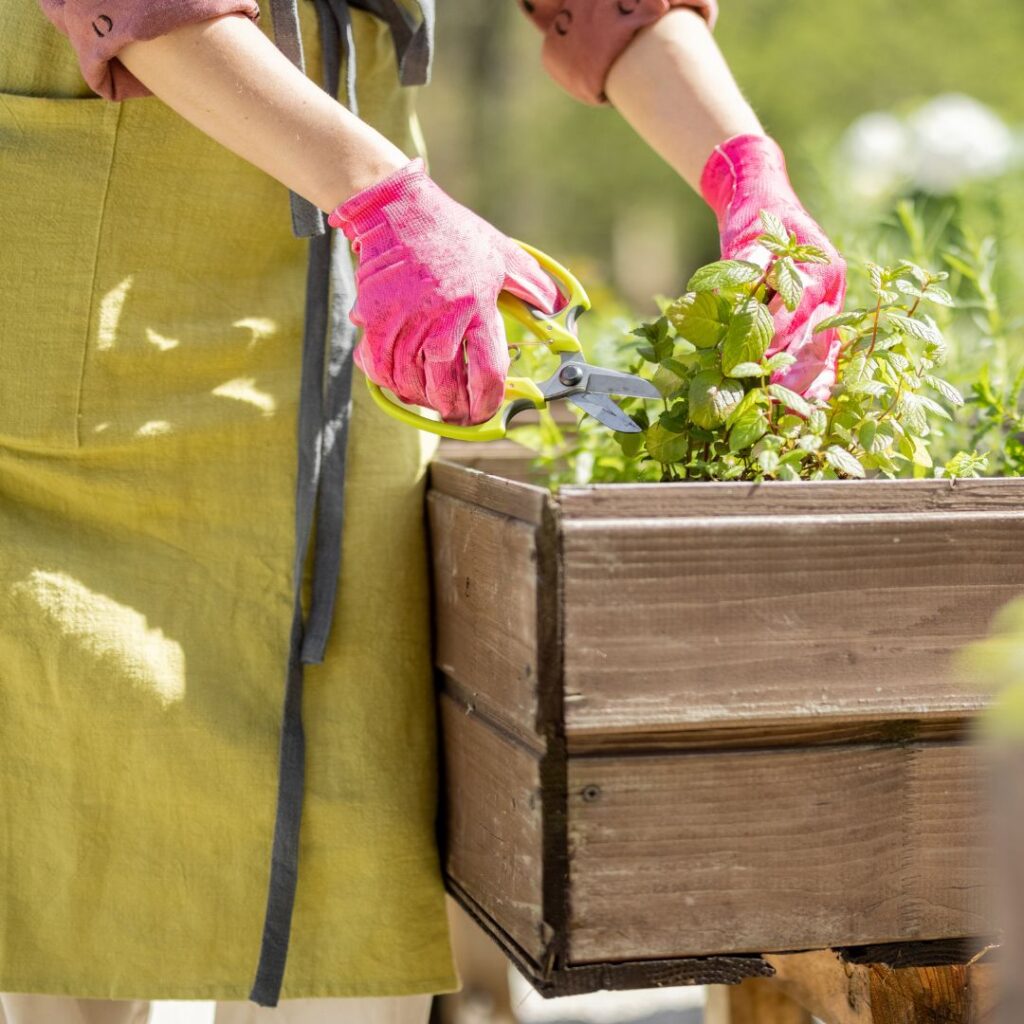
Harvesting, Brewing, and Drying Your Tea
Once your plants are flourishing, it’s time to harvest and prepare your tea leaves.
Pruning and Harvesting: Regularly prune your herbs to encourage bushier growth and prevent them from becoming leggy. Harvest leaves in the morning after the dew has dried but before the heat of the day. This timing ensures the highest concentration of essential oils, which contribute to the flavor and aroma of your tea. Avoid harvesting more than one-third of the plant at a time to ensure continued growth. All of these herbs will continue to grow until the first hard freeze.
Blending and Brewing: Experiment with different combinations to create your unique tea blends. A good starting blend might include lemon balm or lemon verbena with a touch of peppermint for a soothing, aromatic tea.
How to Make Fresh Tea: You can use herbs right out of the garden. Simply harvest a handful of leaves, rinse them gently to remove any dirt or insects, and pat them dry. For a single cup of tea, use about a tablespoon of fresh herbs. Place the herbs in a tea infuser or directly into your cup, then pour hot water over them. Allow the tea to steep for 5-7 minutes to extract the full flavor. Fresh herbs tend to have a milder taste compared to dried ones, so you might want to use a bit more if you prefer a stronger flavor.
How to Dry Herbs for Tea: To dry your herbs, spread them out on a clean, dry surface away from direct sunlight. Or You can also use a drying rack or hang small bunches upside down in a dark, well-ventilated area or dry with an electric dehydrator. Ensure they are completely dry before storing to prevent mold growth. Use about one teaspoon of dried herbs per cup of hot water, steep for 5-10 minutes, and enjoy.
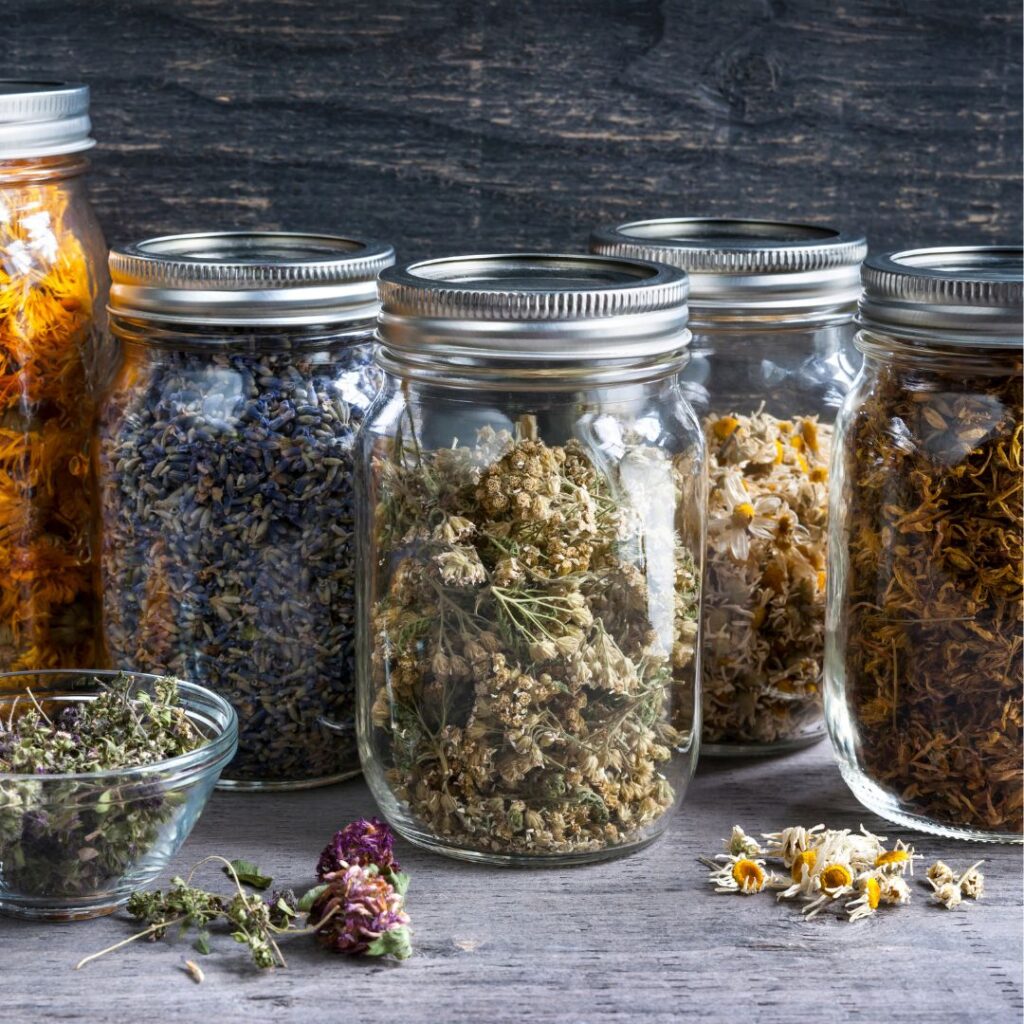
Store fresh herbs in a glass of water or in a container in the refrigerator. Store dried herbs in airtight containers away from light and heat.
